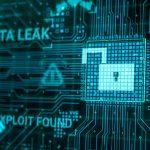Ransomware is a form of malicious software (malware) designed to block access to a computer system or data until a ransom is paid. This type of cyber threat has evolved over the years, with new variants emerging that exploit vulnerabilities in systems, targeting individuals and organizations alike. One particularly concerning variant is NotLockBit ransomware, which has gained notoriety for its aggressive tactics and damaging consequences. In this article, we will delve into the specific threats posed by NotLockBit, how it operates, and the steps you can take to protect yourself.
The NotLockBit Threat: Functionality and Operations
NotLockBit ransomware functions by encrypting files on the victim’s system and demanding a ransom for the decryption key. It primarily infiltrates systems through phishing emails, malicious downloads, or exploiting software vulnerabilities. Once it successfully installs itself, NotLockBit begins its malicious activities by scanning the system for files to encrypt, targeting documents, images, and other valuable data. It renames files using the following format: [original file name].[initialization vector].abcd. For instance, it renames “1.jpg” to “1.jpg.3544329bb141eea628f7c3bff6c79c11.abcd“, “2.png” to “2.png.c1f3b4d9f4c2eb1a6e7a9c3b7f1c2a92.abcd“, and so forth.
Remove annoying malware threats like this one in seconds!
Scan Your Computer for Free with SpyHunter
Download SpyHunter now, and scan your computer for this and other cybersecurity threats for free!
After encryption, NotLockBit creates a ransom note, usually placed in the root directory of the affected files. This note provides specific instructions on how to pay the ransom, often demanding payment in cryptocurrency, which is difficult to trace. The note typically contains threats about permanently losing access to the data if the ransom is not paid within a certain timeframe, instilling fear in the victims to pressure them into compliance.
Consequences of NotLockBit’s Presence
The presence of NotLockBit on a system can have severe consequences, not only for individual users but also for organizations. The immediate effect is the loss of access to important files and data, which can disrupt personal and professional operations. Additionally, victims may suffer financial losses, not only from the ransom itself but also from downtime, loss of productivity, and the potential cost of data recovery. Furthermore, paying the ransom does not guarantee that the attackers will provide the decryption key, leaving victims in a precarious position.
NotLockBit’s text file (“README.TXT“)
DECRYPT_KEY:aW43ZEZLTzJVUHdsSnI1WU16c3o5Z0hJYUN4Mk1LQUFtY0t2K1p mSGVKKy9mVTFr0WV2RXkrQlgwUTUxNXBSWkUyUnhGVG9jMFFBanp6SzJzM0xxUW pXcFdSRGp2clUyRks1a2hIZEpaMTJWc1IzRXpUcmI3QVpybVRkZTd4YUXTjRuK ZBSKORGRGRRT3F0NU9IUGhvVEdLTDM5MzNOVkdm0ElIZzJnUUk4STZwaFg1Y1ZD WHZ0c2hZMTRhZlZZUit6aVZqRUhJZVIvQ2RSWHF1RmFZNUxYU3kyZjIrMDc5RWZ LN2N5NKZ1UU5FcHNQSjdCVzNwazAwVnJ2MmRWaTVUTVc5SnF2a3B0MTMycWRLQ2 RvK2pJem1xNjBIcnBNKzdkQ2hiVVMv0WLVVWVvVXJSMkZVeXVvRLZiR3dFT3hBS 3F6NDhDQmp LNLkwUkR0cWVINGZnPT1rYXJvbGlzbGl1Yzg3NWMKe3dpbmRvd3Mg d2luZG93cyB3aW5kb3dzIFdpbmRvd3MgMTEgUHJvIDEwLjAgMTAgMCAwIDIyMDA
WLj cwOCB9CmZkMzJlMzFULTEyNmMtNDU4NC1hYTLmLWM2ZDRiZDLhNWM20A==Symptoms of NotLockBit Infection
Users may experience several symptoms indicative of NotLockBit ransomware infection, including:
- Inability to access files due to encryption
- Appearance of new file extensions (e.g.,
.notlockbit) - Presence of a ransom note file in directories with encrypted files
- Slower system performance
- Unexpected crashes or freezes
Detection Names for NotLockBit
To determine whether your system is infected with NotLockBit ransomware, you can check for the following detection names used by various security software:
- Ransom.NotLockBit
- NotLockBit ransomware
- Trojan:Win32/NotLockBit
Similar Threats
While NotLockBit is a significant threat, other similar ransomware variants exist that users should be aware of, including:
- LockBit
- Conti
- REvil (Sodinokibi)
These ransomware types share common tactics but may have different methods of encryption and ransom demands.
Comprehensive Removal Guide for NotLockBit Ransomware
If you suspect your computer has been infected with NotLockBit ransomware, follow these detailed steps for removal:
Step 1: Isolate the Infected Device
- Disconnect from the Internet: Immediately disconnect your device from the internet to prevent the ransomware from communicating with its server and spreading to other devices.
- Disable Network Access: If your computer is connected to a network, disable any network access to limit the ransomware’s reach.
Step 2: Boot into Safe Mode
- Restart Your Computer: Reboot your device.
- Enter Safe Mode: As your computer starts up, repeatedly press the
F8key (or the appropriate key for your system) until the Advanced Boot Options menu appears. Select “Safe Mode with Networking.”
Step 3: Use Anti-Malware Software for Scanning
- Download SpyHunter: If you don’t have antivirus software installed, consider downloading SpyHunter, a reliable anti-malware tool.
- Install and Update: Follow the prompts to install SpyHunter. After installation, update the software to ensure it has the latest virus definitions.
- Run a Full System Scan: Initiate a comprehensive scan of your system to detect and remove NotLockBit and any other malware present.
Step 4: Restore Encrypted Files (if possible)
- Check for Backups: If you have backups of your files, restore them after ensuring the ransomware is completely removed.
- Use Data Recovery Tools: If backups are not available, you may attempt to use data recovery tools designed to recover lost or encrypted files. Note that success is not guaranteed.
Step 5: Remove Ransomware Manually (if necessary)
- Access Task Manager: Press
Ctrl + Shift + Escto open Task Manager. - Identify Malicious Processes: Look for unfamiliar processes related to NotLockBit. Right-click and select “End Task.”
- Delete Ransomware Files: Navigate to the directories where the ransom note and encrypted files are located. Delete any suspicious files.
Step 6: Change Passwords and Monitor Accounts
- Change Passwords: After removal, change passwords for all accounts that may have been compromised.
- Monitor Financial Accounts: Keep an eye on your financial accounts for any unauthorized transactions.
Preventive Measures Against Ransomware
To prevent future infections, consider the following security practices:
- Regular Backups: Regularly back up your data using reliable backup solutions. Ensure backups are stored offline or in a secure cloud service.
- Update Software: Keep your operating system and all applications updated to mitigate vulnerabilities.
- Be Cautious with Emails: Avoid opening emails or downloading attachments from unknown sources.
- Use Strong Passwords: Implement strong, unique passwords for your accounts and enable two-factor authentication where possible.
Conclusion
NotLockBit ransomware represents a significant threat to both individuals and organizations. Understanding its operation and taking preventive measures can help you safeguard your data and reduce the risk of infection. We encourage you to download SpyHunter to scan your computer for free and ensure your system’s security.





